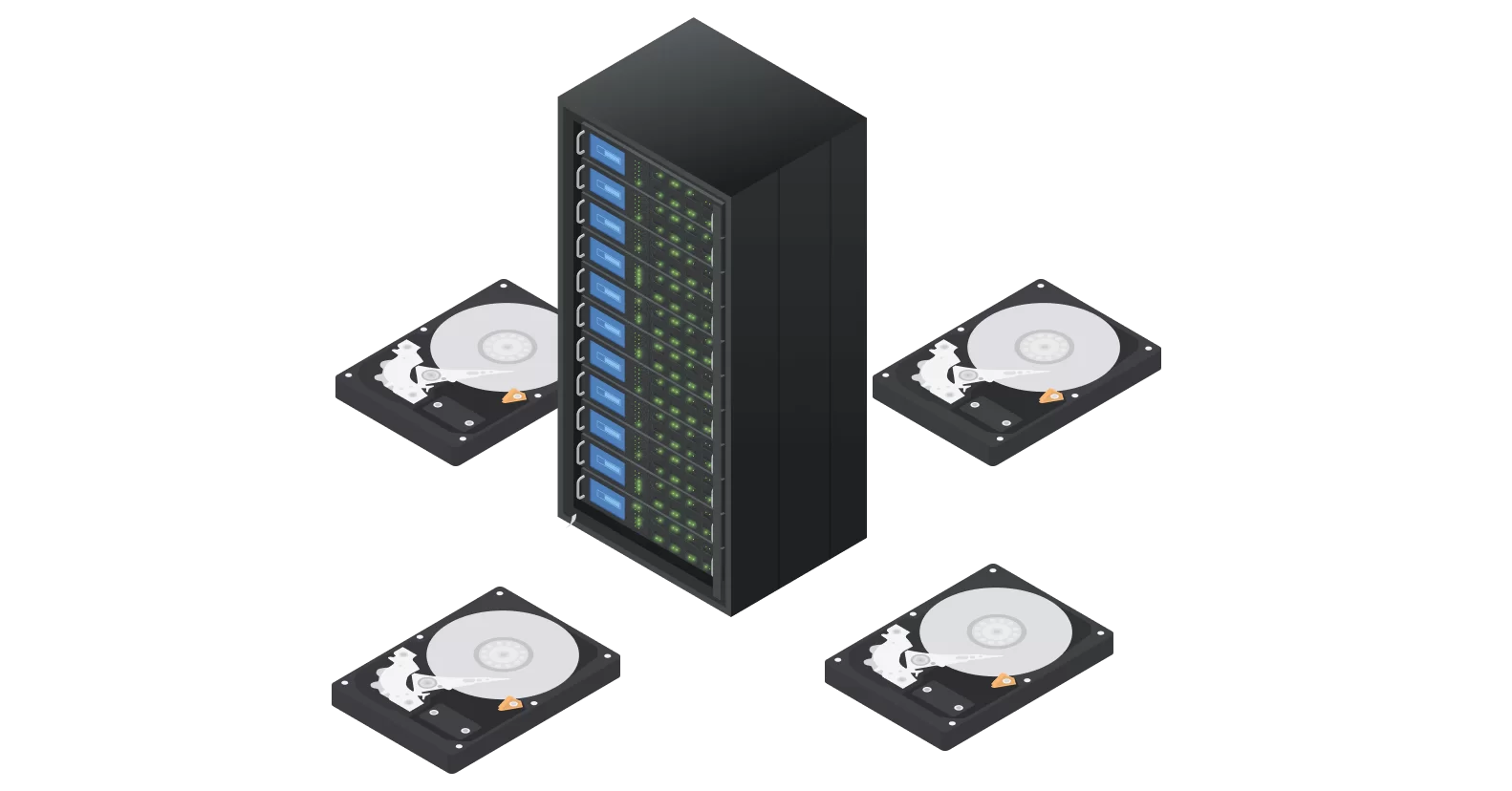Hard drive failure occurs when you don’t want it to. Suddenly you’re editing critical documents and the next minute the computer is not booting or there’s weird clicking inside your laptop. When things go wrong, having the correct data recovery techniques can be the difference between losing everything and restoring your life.
We at Dr IT Fixing know how traumatic data loss can be for companies and individuals. It could be decades of family photos, vital business records, or months of research work. Losing data is like losing a part of yourself. The silver lining? Most data can be restored with the correct methodology and professional skills.
Understanding Modern Hard Drive Failures
Storage devices today are more sophisticated than ever. Old-fashioned spinning hard drives continue to be found in most desktops and many laptops, with solid-state drives gaining popularity in newer machines. All of these demand varied data recovery methods when something goes amiss.
Mechanical hard drives fail in predictable manners. Read/write heads can crash against the whirling platters, motors seize, or electronic parts burn out. These failures tend to provide warning signs – erratic sounds, slow speeds, or files not opening correctly.
Solid-state drives do not fail in the same way. They are not mechanical devices, so you will not experience clicking or grinding noises. Instead, they may make themselves unreadable, display corrupted files, or just vanish from your computer altogether. Data recovery methods for SSDs involve specialized equipment and expertise.
Software-Based Recovery Solutions
When hard drives instead build logical errors instead of physical damage, software recovery solutions most commonly yield the quickest route to recovery. These recovery techniques are appropriate for deleted files that have been accidentally removed, file system corruption, or slight formatting problems.
Professional data recovery software can read sector by sector across your drive for file signatures and directory structure rebuilds. They are best used when the hardware itself is not harmed – consider accidental deletion versus a drive that won’t spin up.
The most significant disadvantage of software techniques is time. Scanning a big drive can take several days, and there are no assurances of success. With logical failures, though, these techniques mostly retrieve files that appeared irretrievable.
Hardware-Level Recovery Techniques
Physical hard drive damage needs more aggressive data recovery techniques. When drives produce strange sounds, fail to spin up, or won’t be detected by your computer, the issue generally is with mechanical parts or electronic circuits.
Clean room environments are then necessary for drives with head crash or platter damage. Tiny dust particles can ruin data irreversibly when a drive is opened outside of controlled environments. Professional facilities have ISO-certified clean rooms reserved specifically for these sensitive procedures.
Head replacement requires exchanging faulty read/write heads with equivalent parts from donor drives. It demands intimate understanding of drive families, firmware compatibility, and very fine mechanical skills. A single misstep can convert recoverable data into a permanent loss.
Advanced RAID Recovery Techniques
Business environments often use RAID arrays for improved performance and redundancy. When these systems fail, raid recovery becomes significantly more complex than single-drive scenarios. Multiple drives might fail simultaneously, or controller cards can corrupt the array configuration.
Raid recovery involves knowledge of various RAID levels and their respective failure modes. RAID 0 offers no redundancy at all, so failure of any drive usually translates to total loss of data unless professional recovery is undertaken immediately. RAID 5 can recover from one drive failure, but two failing drives create very hard recovery situations.
Virtual RAID reconstruction rebuilds the array topology without the physical repair of all drives. The method does recover data even if multiple drives have failed, although the success rate depends on the particular failure modes and RAID level.
Professional Laboratory Procedures
Our Data Recovery Services in Dubai utilizes various methods based on the failure type and customer specifications. Every case is given individual evaluation to identify the best recovery method.
The initial evaluation includes thorough testing of the drive electronics, mechanical parts, and data accessibility. This is what defines whether the drive requires clean room procedures, firmware repair, or can be tackled through software approach.
Component-level repair corrects problems with drive electronics, such as burned PCBs, faulty motor drivers, or faulty firmware. Most drives that seem totally dead can be brought back to life by proper electronic diagnosis and component replacement.
Modern Backup and Recovery Integration
Prevention is still the best data protection strategy. Modern backup and recovery methods have come a long way from file copying days to encompass real-time synchronizations, versioned backups, and automated cloud storage.
Cloud integration offers off-site protection that endures local catastrophes such as fire, flood, or theft. Large sets of data take days or weeks to restore over internet connections, so local duplicate copies are also invaluable for speedy recovery.
Hybrid solutions integrate local and cloud storage to offer maximum protection and fastest recovery. Backup and recovery methods now incorporate intelligent deduplication, compression, and incremental backups that reduce storage needs to a minimum while delivering maximum protection.
Enterprise-Level Recovery Systems
Business setups need more advanced hard disk data recovery mechanisms because of larger storage systems and more stringent uptime expectations. Enterprise drives tend to have recovery features and diagnostics built into the drives that are not available in consumer products.
Hot-swappable drive bays enable replacement of faulty drives without shutting down the system, and RAID controllers can automatically rebuild arrays when replacement drives are added. These capabilities minimize downtime but do not preclude professional recovery for chained failures.
Disaster recovery planning is more than a matter of recovering data. Total system recovery, application setup, and business continuity enter into enterprise recovery plans that keep operations out of commission as little as possible.
Emerging Technologies and Recovery Challenges
New storage technologies introduce new challenges for the recovery methods of data. NVMe drives have much higher speeds than older SATA interfaces, but failure modes for them are not always well defined. Recovery methods keep advancing as these technologies grow up.
Encryption introduces complexity into all recovery situations. Even successful data extraction is not a guarantee of access to encrypted data without appropriate keys or certificates. Data recovery mechanisms need to accommodate different encryption standards and key management systems.
Solid-state drive wear leveling distributes data writes across the entire drive, making physical data locations unpredictable. Traditional recovery methods that rely on known file locations become less effective with SSDs, requiring new approaches and specialized tools.
Cost-Effective Recovery Strategies
Not every data loss situation requires the most expensive recovery methods. Understanding your options helps make informed decisions about which data recovery methods make financial sense for your specific situation.
Priority recovery prioritizes the most valuable files. Instead of trying to recover entire drives, this method approaches targeted file types or directories, conserving costs and recovering the most valuable information.
Partial recovery may be sufficient if full restoration is too expensive. Recovering 80% of your data at a fraction of the cost could be preferable to paying thousands for full recovery of less important data.
Quality Assurance and Data Integrity
Reputable hard drive data recovery techniques incorporate validation processes to verify recovered data integrity. Merely retrieving files does not ensure usability or lack of corruption.
File validation entails verifying recovered documents, images, and databases for correct structure and readability. This process detects files that can be partially corrupted during the failure or recovery process.
Our Expert IT Services & Laptop Repair in Dubai team has stringent quality levels to maintain throughout the process of recovery. Each recovered file is verified tested to confirm that it opens correctly and holds the expected data.
Timeline Planning and Expectations
Recovery times differ radically depending on drive condition, data quantity, and selected data recovery techniques. Easy logical recoveries could be completed in a matter of hours, but hardware-intensive cases may take weeks to restore fully.
Emergency services offer quicker turnaround for high-priority business information, although premium rates are charged for expedited processing. Regular recovery services offer cost-effectiveness for most customer needs.
Ongoing communication informs customers of progress, findings, and changes in original estimates. Openness is used to manage expectations and enable sound decisions regarding pursuing recovery activities.
Questions and Answers Section
Which data recovery techniques are best for clicking hard drives?
Clicking noises typically point toward head assembly issues necessitating clean room procedures and hardware replacement. Software recovery techniques will not be effective for mechanical faults. Professional analysis verifies whether the heads can be replaced or whether platter damage has been done.
Can I recover data from a totally dead hard drive that will not power on?
Yes, there are numerous drives that seem totally dead but contain recoverable data. The problem could be a PCB failure, faulty motor, or buggy firmware instead of lost data. Expert diagnosis can establish if the storage platters hold good data.
What prevents future data loss through backup and recovery methods?
Contemporary backup solutions make several copies of your data in varied locations and storage mediums. Automated schedules cause periodic backups without any user input. Version control maintains several versions of a file, safeguarding against corruption and accidental overwriting.
Why is raid recovery more complicated than single drive recovery?
RAID arrays spread data across multiple drives employing precise algorithms. With several drives failing, reconstruction involves recognizing the actual RAID setup, stripe sizes, and drive order. Loss of or improperly ordered drives can render recovery impossible without professional help.
Do SSDs have separate data recovery techniques from standard drives?
Yes. SSDs lack moving parts, so mechanical techniques aren’t applicable. SSD recovery involves memory chip removal, firmware fixes, and addressing wear leveling algorithms that spread data randomly throughout the drive.
How long do most data recovery methods take to finish?
Basic software recoveries could take hours, whereas hardware fixes take days or weeks. Time is contingent on drive size, extent of damage, and recovery approach selected. Emergency services can speed up critical recoveries for extra fee.
What's the success rate for professional data recovery techniques?
It depends on type of failure. Logical failures can be 90%+ recovered, where physical damage may only support partial recovery. Head crashes, platter damage, and multiple failures of RAID are the greatest challenges to full data restoration.
Is it possible to recover encrypted drives by means of normal data recovery methods?
Recovery of encrypted drives is no different from unencrypted drives. But recovering the data requires correct encryption keys or certificates. Without these, even recovered data successfully will not be accessible.
Professional Data Recovery Excellence
When your hard drive fails and takes your precious data with it, the right recovery method is everything. The data recovery techniques that are now available can tackle anything from easy file deletion to sophisticated hardware failure, but only if done correctly with proper diagnosis and the proper techniques.
Our Apple Support & Software Solutions Dubai experts combine the latest recovery technology with tried and tested methodologies to give you the highest possible chance of recovering your data. Every file is important to us, whether it’s priceless family photos or vital business files that keep your business running.
Don’t turn hard drive failure into a permanent catastrophe. Call Dr IT Fixing today for expert assessment of your data recovery requirements. Our in-depth strategy to data recovery methods ensures you achieve the optimum result while costs remain within reason and timelines remain realistic.




